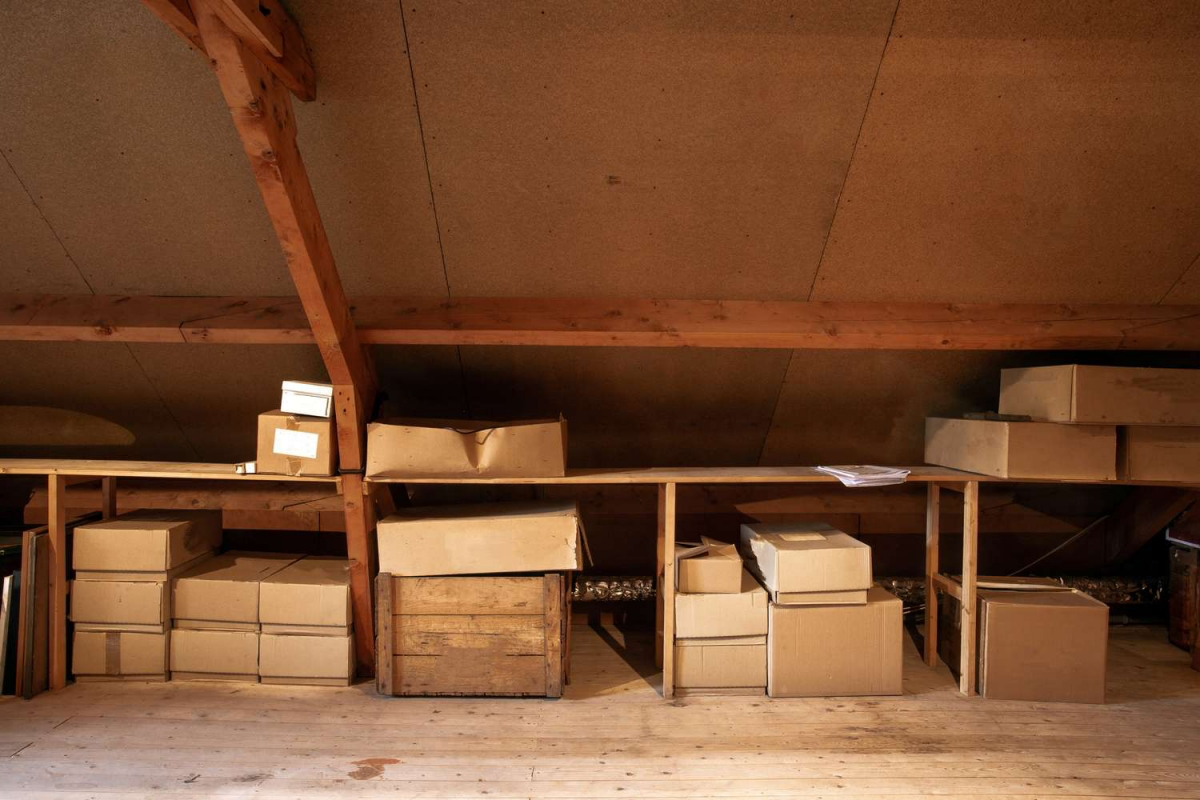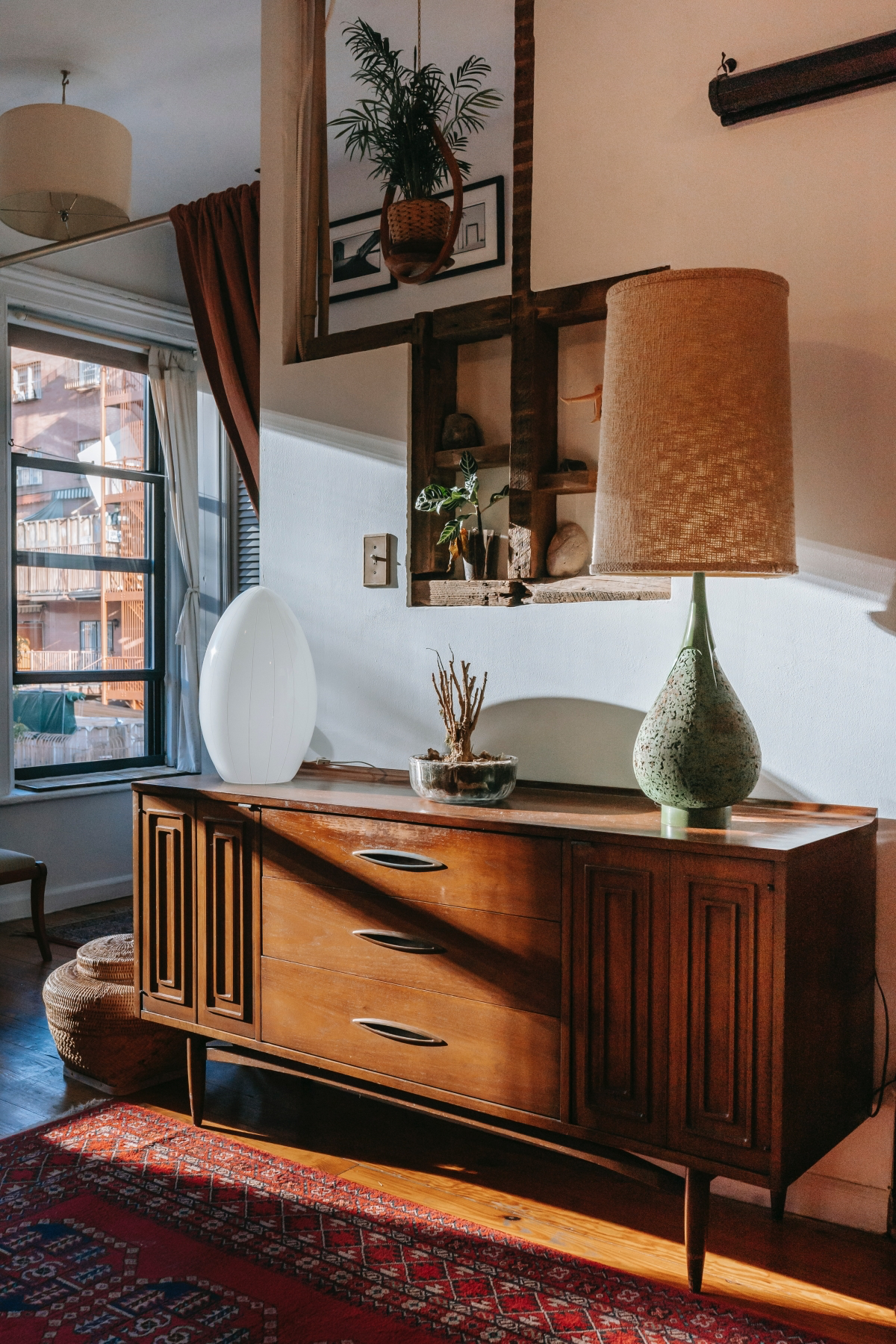Is Your Attic Secretly Destroying Your Stuff? A Pro’s Guide to Smart Storage
I’ve been a home inspector for a long, long time. We’re talking thousands of homes, which means I’ve climbed into thousands of attics. And let me tell you, I’ve seen it all. Some are perfectly organized, but most are forgotten zones filled with slow-motion disasters.
In this article
It’s easy to see why. We all look at the attic as a free, out-of-the-way storage locker. It seems perfect for stashing holiday decor, old furniture, and boxes of memories. But here’s the tough truth most people don’t realize: your attic isn’t just a dusty spare room. It’s an extreme environment, a buffer zone between your cozy living space and the wild weather outside.
The single biggest mistake I see, over and over, is storing sentimental or valuable items up there. And the results can be just heartbreaking. I’m the guy who has to tell a family that their photo albums have literally melted into solid bricks of plastic and paper. I’m the one who points out how their grandmother’s antique dresser has split at the seams. My goal here is to save you from that conversation by showing you what I’ve learned firsthand.

The Three Villains Living in Your Attic
To use your attic without wrecking your stuff, you have to understand what’s actually going on up there. It’s a battlefield dominated by three forces: intense heat, creeping humidity, and hungry pests.
1. The Attic-as-an-Oven Problem
First off, let’s talk heat. On a sunny 90°F day, a standard attic can easily soar to 150°F or even higher. Your dark roof shingles are basically a giant solar panel, turning the whole space into a convection oven. This isn’t just uncomfortable; it actively degrades everything inside. This daily cycle of baking hot and cooling off at night puts immense stress on materials. I once found a box of old vinyl records that had warped into useless, wavy discs. The heat had literally reshaped them. Glues in furniture and bookbindings will soften and fail, plastics will turn brittle and crack, and the delicate guts of old electronics will just give up.

2. The Silent Damage of Humidity
Moisture is the second enemy. Sometimes it’s from a tiny roof leak, but more often, it’s just condensation. Warm, humid air from your living space (from cooking, showers, etc.) rises into the cooler attic. When it hits a cold surface, like the underside of the roof on a winter night, that vapor turns back into water. It’s the same reason your bathroom mirror fogs up.
This moisture is a five-star resort for mold and mildew. Cardboard boxes are the worst offenders—they act like sponges, becoming a moldy, musty mess. I can usually smell a moisture problem the second I pop the attic hatch. That damp, earthy smell spells trouble. It also rusts metal, yellows paper, and causes wood to swell and then shrink, which is what cracks furniture apart.
3. The Uninvited Guests (Pests)
To a pest, your attic is a luxury high-rise apartment. It’s sheltered, warm, and full of delicious nesting materials. Rodents like mice and squirrels will happily chew on wood, boxes, and even electrical wiring. And that’s not just a nuisance; it’s a serious fire hazard. Heads up! Pests aren’t just gross, they can be a financial nightmare. Some home insurance policies won’t cover fire damage if it’s caused by rodents chewing on wires, as they might consider it a preventable maintenance issue.

Insects are just as bad. Silverfish feast on the starch in paper and bookbindings. Moths and carpet beetles will devour any natural fibers they can find, turning wool sweaters and family heirlooms into dust.
Okay, So Where Should I Put My Stuff? The Storage Showdown
So if the attic is so bad, what are the alternatives? Every spot has its pros and cons.
The Attic: We know the deal by now. It’s free space, but it’s a high-risk environment. It’s really only suitable for a very short list of durable, non-valuable items. Think of it as deep, deep storage for things you wouldn’t be heartbroken to lose.
The Garage: A step up from the attic, but not by much. It doesn’t get as hot, but it still experiences significant temperature swings. It’s also much more accessible to pests and ground moisture. It’s a decent spot for tools, gardening supplies, and outdoor gear, especially in sturdy, sealed containers.

The Basement: This one is tricky. A dry, finished, climate-controlled basement is fantastic—almost as good as a room in your main house. But a damp, unfinished basement is a mold and mildew factory just waiting to happen. If your basement has ever had water issues, it’s a terrible place for cardboard boxes, wood, or textiles.
An Indoor Closet: This is the gold standard for anything you care about. Your photos, important documents, delicate fabrics, and electronics belong here. The environment is stable and protected. The only downside? It takes up valuable living space.
A Climate-Controlled Storage Unit: If you have items that are too valuable for the attic but too bulky for a closet (like antique furniture), this is your best bet. It’s designed to keep temperature and humidity stable. Of course, it comes at a cost. Depending on the size and your location, expect to pay anywhere from $50 to over $200 a month.

The “Never, EVER Store in an Attic” List
Based on years of seeing the tragic results, here is my definitive list of things that have no business being in a standard attic. No exceptions.
- Wooden Furniture & Musical Instruments: The heat and humidity will warp, crack, and unglue them. A guitar or violin stored in an attic is basically a beautiful piece of firewood in the making.
- Electronics & Media: Heat kills electronics. It can melt plastic, fry circuits, and cause batteries to leak corrosive acid. Vinyl records, VHS tapes, and DVDs will be rendered unplayable.
- Photographs, Books & Important Papers: These are often irreplaceable. Photos will fuse together, paper will yellow and turn brittle, and book bindings will fall apart. Vital records (birth certificates, deeds) should be in a fireproof safe, not an oven.
- Textiles, Clothing & Rugs: Natural fibers are a buffet for moths and beetles. Leather will dry out and crack. The musty smell from mildew is nearly impossible to remove.
- Candles & Anything That Can Melt: This one seems obvious, but you’d be surprised. A box of holiday candles will become a single, colorful puddle of wax.
- Flammable & Hazardous Materials: This is a critical safety warning. NEVER store paint, thinners, solvents, or propane tanks in your attic. The extreme heat can increase pressure in the cans, creating a risk of fire or explosion. It’s like putting a bomb in the hottest part of your house.

So, What Can I Safely Store Up There?
Alright, so it’s not completely useless! The key is to only store durable, inorganic things that you don’t have a deep emotional or financial attachment to.
- Holiday decorations (the plastic, ceramic, and metal kind)
- Kitchenware you rarely use, like canning jars or extra pots and pans
- Empty luggage and coolers
- Durable sports equipment (think plastic sleds, not a leather baseball glove)
How to Use Your Attic the Smart Way
If you’re going to use it, at least do it right. A little prep goes a long way.
First, Your 5-Minute Attic Checkup: Before you haul a single box up there, grab a good flashlight and do a quick inspection. You’re looking for four things:
- Dark water stains on the wood? That’s a sign of a current or past roof leak. Fix that first.
- Little black pellets in the insulation? Sorry, those are rodent droppings. You have pests. Call an exterminator.
- Insulation blocking the vents at the edges? Clear it away. You need that airflow to manage heat and moisture.
- Can you see any daylight through the roof boards? If you can, so can rain. That’s a hole that needs fixing.
Get the Right Gear: Ditch the cardboard boxes. Invest in high-quality, airtight plastic bins. Look for ones with a foam or rubber gasket in the lid and at least four strong latches to create a good seal. Expect to pay around $20 to $40 for a good 27-gallon bin at places like Home Depot, but it’s absolutely worth it. And a pro tip: place the bins on a couple of 2x4s or plastic shelving to keep them off the floor. This improves air circulation and protects them from minor condensation.

A Serious Word on Weight: Your attic was likely not designed to be a warehouse. The ceiling joists are meant to hold up drywall and insulation, not your entire college textbook collection. Overloading them can cause the ceiling below to sag or even collapse. As a rule of thumb, if you plan on storing more than a few hundred pounds or covering a large area, you absolutely need to consult a structural engineer first. A consultation might run you $300-$600, which is a whole lot cheaper than repairing a collapsed ceiling.
Quick Action for Today: Rescue Your Memories
Feeling overwhelmed? Don’t be. Here’s a simple, 5-minute task you can do right now. Just go up to your attic, grab ONE box of photos or important papers, and move it to a closet inside your house. That’s it. You just rescued priceless memories from certain destruction.
For long-term protection, consider digitizing your old photos. You can use professional scanning services or get a good quality flatbed scanner and do it yourself over a few weekends. It’s the ultimate backup.

And the final word is this: if an item is valuable or irreplaceable to you, the attic is the wrong place for it. No amount of convenience is worth the risk. Treat your attic like the rough utility space it is, and you’ll avoid a whole lot of future regret.
Galerie d’inspiration


The Cardboard Box Trap: It’s tempting, but a cardboard box is the worst choice for attic storage. It acts like a sponge for humidity, quickly weakening, inviting mold, and becoming a five-star meal for silverfish and roaches. The glue and paper are an open invitation.
The Airtight Plastic Fortress: The only truly safe option. Invest in heavy-duty, gasket-sealed plastic bins. Models like the Sterilite Gasket Box or the Rubbermaid Brute series are made of durable polypropylene that creates a weatherproof seal against moisture, dust, and pests, withstanding extreme temperature swings without cracking.
More than 90% of American homes have an attic, but fewer than 20% have proper ventilation and insulation, turning them into environmental torture chambers for stored goods.
This statistic from building science experts highlights a critical reality: your attic isn’t a neutral space. Without professional upgrades like ridge vents or spray foam insulation (such as that offered by Icynene), it will inevitably experience extreme heat and moisture swings. Before storing anything of value, have a roofer or insulation specialist assess your attic’s ventilation—it could be the most important step in protecting your belongings.










